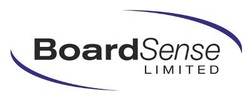Some boards I’ve dealt with are prepared to discuss culture but too many don’t see it as anything to do with the board. The tragic thing is, that it’s the culture the board sets which determines the culture of the organisation. And possibly more tragic is that the culture of the board is set by the Chair.
You’ve all experienced Chairs who inspire you to greater heights of governance, but conversely, you’ve probably experienced Chairs who leave you despondent and ready to resign from the Board.
In this reasonably short article, the author sets out the steps necessary for the Board and CEO to evaluate existing culture and identify and implement a culture appropriate to today’s business environment.
http://blog.boardsource.org/blog/leadership-of-the-board-chair-in-creating-board-culture


 RSS Feed
RSS Feed
